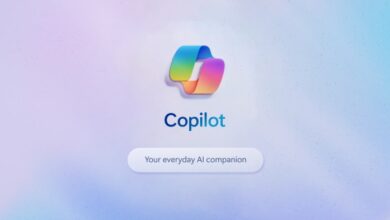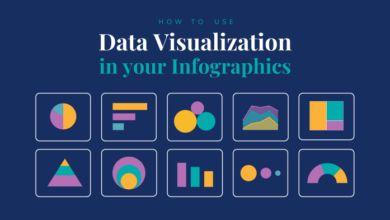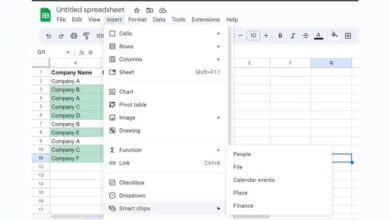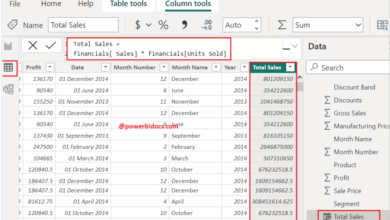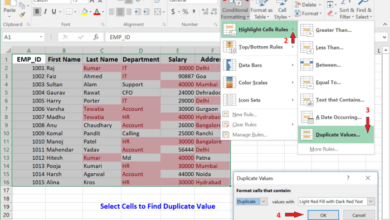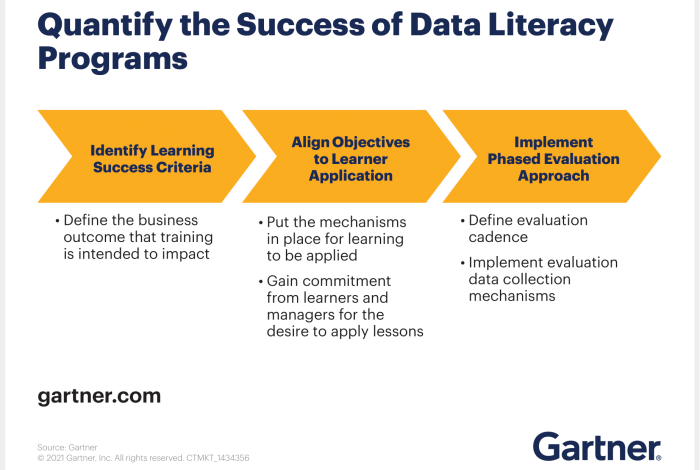
What Is Data Literacy: Understanding the Power of Information
What is data literacy? In a world awash with data, it’s the ability to navigate, understand, and utilize information effectively. Imagine a world where you can interpret complex charts, make informed decisions based on trends, and even uncover hidden patterns in seemingly random data.
That’s the power of data literacy. It’s not just about crunching numbers; it’s about unlocking the potential of information to solve problems, drive innovation, and make a real difference in the world.
From the boardroom to the classroom, data literacy is becoming increasingly crucial. It empowers individuals to make informed choices, helps organizations gain a competitive edge, and allows society as a whole to address complex challenges with greater clarity and understanding.
Defining Data Literacy
In today’s data-driven world, understanding and interpreting data is crucial for success in almost every field. Data literacy is the ability to read, analyze, interpret, and communicate data effectively. It’s not just about knowing how to use spreadsheets or create charts; it’s about understanding the bigger picture and using data to make informed decisions.
Data Literacy vs. Related Concepts
Data literacy is often confused with related concepts like data science, data analysis, and computer programming. While these fields are all interconnected, they have distinct focuses.
- Data scienceis a broader field that involves extracting knowledge and insights from data using scientific methods, algorithms, and processes. Data scientists are often involved in collecting, cleaning, and analyzing large datasets to solve complex problems.
- Data analysisis a specific set of techniques used to explore and interpret data, often using statistical methods and visualization tools. Data analysts typically work with structured data to identify patterns, trends, and insights.
- Computer programmingis the process of writing instructions for computers to execute. While programming skills are essential for data science and analysis, data literacy focuses on understanding the data itself, not just the code used to manipulate it.
- Data literacybridges the gap between these fields by equipping individuals with the fundamental skills needed to understand, interpret, and communicate data effectively. It’s about knowing what data means, how it’s collected, and how it can be used to make informed decisions.
Real-World Examples of Data Literacy
Data literacy is essential in a wide range of industries and professions. Here are some examples:
- Business: Marketers use data literacy to analyze customer behavior, identify trends, and develop targeted marketing campaigns. Sales teams leverage data to forecast sales, track performance, and optimize strategies.
- Healthcare: Healthcare professionals use data to track patient outcomes, identify potential risks, and personalize treatment plans. Researchers use data to analyze clinical trials and develop new treatments.
- Education: Educators use data to assess student performance, identify areas for improvement, and personalize learning experiences. Researchers use data to analyze educational trends and develop new teaching methods.
- Government: Government agencies use data to track economic indicators, monitor social trends, and make informed policy decisions. Researchers use data to study public policy and evaluate the effectiveness of government programs.
Key Components of Data Literacy
Data literacy is not merely about knowing how to use software or interpreting charts. It’s a multifaceted skill encompassing a combination of knowledge, skills, and attitudes. It’s about understanding the data’s context, interpreting its meaning, and drawing informed conclusions.
Understanding Data Concepts
Data literacy requires a fundamental understanding of data concepts, including its types, structures, and representations. This knowledge enables individuals to effectively analyze, interpret, and communicate data insights.
Data literacy is about understanding how to interpret and use data to make informed decisions. It’s not just about crunching numbers, but about asking the right questions and drawing meaningful insights. For example, a recent article in artnet news afternoon will tech billionaires pay picasso explores the potential impact of tech billionaires on the art market.
Data literacy could help us analyze this trend and understand its implications for artists, collectors, and the art world as a whole.
- Data Types:Different types of data, such as numerical, categorical, and textual, require different approaches to analysis and interpretation. Understanding the distinction between quantitative and qualitative data is crucial for selecting appropriate analytical methods and drawing meaningful conclusions.
- Data Structures:Data can be organized in various ways, including tables, graphs, and networks. Familiarity with different data structures allows individuals to understand how data is organized and how to access and manipulate it effectively.
- Data Representations:Data can be presented in numerous formats, including charts, graphs, and maps. Understanding how different representations can highlight specific insights and potential biases is essential for critical data analysis.
Data Collection and Processing
Understanding data collection and processing methods is essential for evaluating the reliability and validity of data.
Data literacy is about understanding how data is collected, analyzed, and used to make informed decisions. It’s not just about crunching numbers, but about interpreting the story behind the data. Take, for example, Harvey Nichols’ five beauty picks chosen by industry insiders – this list likely relies on data about consumer preferences and trending products.
Understanding this data allows Harvey Nichols to cater to their audience effectively, demonstrating the power of data literacy in the business world.
- Data Collection Methods:Various methods are used to collect data, including surveys, experiments, and observational studies. Each method has its strengths and weaknesses, and understanding these differences is crucial for evaluating the quality of the data.
- Data Cleaning and Preparation:Raw data often contains errors, inconsistencies, and missing values. Data cleaning and preparation techniques are essential for ensuring data accuracy and reliability before analysis.
- Data Transformation and Aggregation:Data may need to be transformed or aggregated to suit specific analytical needs. Understanding these processes is crucial for ensuring that data is presented in a way that supports accurate interpretation.
Data Analysis and Interpretation
Data analysis involves using various techniques to extract meaningful insights from data.
- Descriptive Statistics:Descriptive statistics summarize data using measures such as mean, median, and standard deviation. Understanding these measures allows individuals to describe the central tendency and variability of data.
- Inferential Statistics:Inferential statistics allow individuals to draw conclusions about populations based on sample data. Understanding concepts like hypothesis testing and confidence intervals is crucial for making data-driven decisions.
- Data Visualization:Data visualization techniques use graphical representations to communicate data insights effectively. Understanding different chart types and their strengths and weaknesses is crucial for creating clear and impactful visualizations.
Critical Thinking and Communication
Data literacy requires individuals to critically evaluate data and communicate their findings effectively.
- Critical Thinking:Data literacy involves questioning the source, context, and potential biases of data. It also involves considering alternative interpretations and evaluating the strength of evidence.
- Data Communication:Communicating data insights effectively involves tailoring the message to the audience and using appropriate language and visual aids. Data literacy enables individuals to convey complex data in a clear, concise, and engaging manner.
Importance of Components Across Different Roles
| Component | Business Analyst | Data Scientist | Marketing Manager | Teacher |
|---|---|---|---|---|
| Understanding Data Concepts | Essential for understanding business data and interpreting reports | Fundamental for designing and implementing data analysis models | Essential for interpreting market research data and customer behavior | Important for understanding student performance data and designing effective learning activities |
| Data Collection and Processing | Crucial for ensuring data quality and reliability for business analysis | Essential for preparing data for analysis and building predictive models | Important for collecting and analyzing customer data for marketing campaigns | Necessary for collecting and analyzing student data to assess learning outcomes |
| Data Analysis and Interpretation | Essential for extracting insights from business data and making informed decisions | Core skill for developing and testing data-driven hypotheses | Crucial for analyzing market trends and customer preferences | Essential for interpreting student performance data and identifying areas for improvement |
| Critical Thinking and Communication | Essential for evaluating data and communicating findings to stakeholders | Crucial for interpreting results and communicating findings to technical and non-technical audiences | Important for evaluating data and communicating insights to marketing teams | Essential for evaluating data and communicating findings to students, parents, and colleagues |
The Benefits of Data Literacy
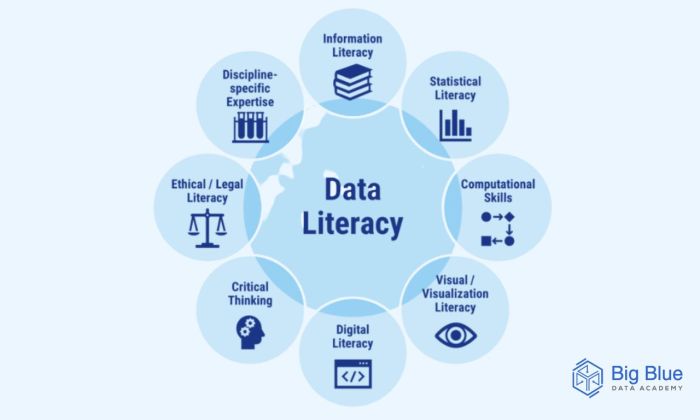
Data literacy is not just about understanding numbers and charts; it’s about harnessing the power of data to make informed decisions, drive innovation, and solve problems effectively. In today’s data-driven world, being data literate is no longer a luxury but a necessity.
Benefits for Individuals
Individuals with data literacy skills have a significant advantage in navigating the modern world. They can analyze information critically, identify patterns and trends, and make better decisions in their personal and professional lives.
- Enhanced Decision-Making:Data literacy empowers individuals to make informed choices by analyzing relevant data, understanding potential risks and opportunities, and evaluating different options. For example, a data-literate individual might use financial data to make informed investment decisions or analyze health data to make healthier lifestyle choices.
Data literacy is the ability to understand and interpret data, which is crucial in today’s information-driven world. It’s like knowing how to read a blueprint, except instead of a building, you’re understanding the story a dataset tells. For example, if you’re tackling a home improvement project like how to fill in a recessed wall niche , you’ll need to analyze the dimensions, materials, and instructions to achieve a successful outcome.
Just like data literacy empowers you to make informed decisions with data, it also allows you to confidently navigate the world of information and use it to your advantage.
- Improved Problem-Solving:Data literacy equips individuals with the skills to identify problems, gather relevant data, analyze patterns, and develop effective solutions. For instance, a data-literate student might analyze data on student performance to identify areas for improvement or a data-literate entrepreneur might analyze market data to identify opportunities for growth.
- Increased Career Opportunities:Data literacy is a highly sought-after skill in today’s job market. In many industries, employers are looking for individuals who can analyze data, interpret insights, and make data-driven decisions. Data-literate individuals have a competitive edge in securing jobs and advancing their careers.
Benefits for Organizations
Organizations that embrace data literacy reap significant benefits, including improved efficiency, innovation, and competitiveness.
- Data-Driven Decision-Making:Data literacy enables organizations to make informed decisions based on real-time data, leading to more effective resource allocation, optimized processes, and better outcomes. For example, a company might analyze customer data to identify trends and personalize marketing campaigns, resulting in increased sales and customer satisfaction.
- Enhanced Innovation:Data literacy fosters innovation by providing insights into customer needs, market trends, and emerging technologies. Organizations can use this data to develop new products, services, and business models that meet evolving market demands.
- Improved Risk Management:Data literacy helps organizations identify and mitigate risks by analyzing data to detect potential threats, assess vulnerabilities, and develop proactive strategies. For example, a financial institution might use data analytics to identify fraudulent transactions and prevent financial losses.
Benefits for Society
Data literacy is crucial for a well-informed and engaged citizenry. It empowers individuals to critically evaluate information, participate in public discourse, and make informed decisions about their communities and the world around them.
- Informed Citizenry:Data literacy enables individuals to critically evaluate information presented in the media, understand complex issues, and make informed decisions about public policy. For example, a data-literate citizen might analyze data on climate change to understand its impact and advocate for sustainable solutions.
- Civic Engagement:Data literacy empowers individuals to participate in civic discourse and contribute to positive social change. By understanding data, citizens can identify social problems, analyze potential solutions, and advocate for policies that benefit their communities.
- Accountability and Transparency:Data literacy promotes transparency and accountability in government and other institutions. By understanding how data is collected, analyzed, and used, citizens can hold institutions accountable for their actions and ensure that decisions are made based on evidence and facts.
Developing Data Literacy: What Is Data Literacy

Developing data literacy is an ongoing journey, not a destination. It requires a conscious effort to acquire and refine skills over time. Fortunately, numerous resources and strategies are available to help individuals at all levels enhance their data literacy.
Practical Steps and Resources
Individuals can adopt practical steps and utilize available resources to enhance their data literacy skills. Here’s a breakdown of actionable strategies:
- Start with the basics: Begin by understanding fundamental concepts like data types, data visualization, and basic statistical measures. Numerous online resources offer introductory courses and tutorials on these topics.
- Engage with data visualization tools: Explore tools like Tableau, Power BI, or Google Data Studio to learn how to present data in visually compelling and insightful ways. These tools can help you translate raw data into easily understandable charts, graphs, and dashboards.
- Practice with real-world datasets: Apply your learning by working with real-world datasets available on platforms like Kaggle or UCI Machine Learning Repository. This hands-on experience will help you develop practical skills and gain confidence in data analysis.
- Join data communities and online forums: Connect with other data enthusiasts through online communities, forums, and social media groups. Engaging in discussions, asking questions, and sharing insights can accelerate your learning journey.
- Seek out mentors and guidance: Consider reaching out to experienced data professionals for mentorship or guidance. Their insights and advice can provide valuable direction and support as you develop your data literacy skills.
Roadmap for Data Literacy Development
A personalized roadmap can guide individuals at different levels of data literacy through their learning journey. Here’s a sample roadmap with key milestones and learning pathways:
- Beginner Level:
- Focus: Develop foundational understanding of data types, data visualization, and basic statistical concepts.
- Learning Resources: Online courses, tutorials, and introductory books on data literacy, data visualization, and basic statistics.
- Key Milestones: Successfully complete introductory courses on data literacy, create basic data visualizations, and interpret simple statistical measures.
- Intermediate Level:
- Focus: Enhance data analysis skills, explore data cleaning and manipulation techniques, and gain experience with data storytelling.
- Learning Resources: Courses on data analysis, data cleaning, and data storytelling; hands-on projects using real-world datasets.
- Key Milestones: Successfully clean and manipulate datasets, perform basic data analysis, and create compelling data narratives.
- Advanced Level:
- Focus: Master advanced data analysis techniques, explore machine learning and predictive modeling, and develop expertise in specific data domains.
- Learning Resources: Courses on advanced data analysis, machine learning, and data science; participation in data science competitions and hackathons.
- Key Milestones: Apply advanced data analysis techniques, develop machine learning models, and contribute to data-driven projects in specific domains.
Recommended Tools, Courses, and Platforms
A wide range of tools, courses, and platforms can support the development of data literacy skills. Here are some recommendations:
- Data Visualization Tools: Tableau, Power BI, Google Data Studio, Qlik Sense, Datawrapper
- Data Analysis Software: R, Python (with libraries like Pandas, NumPy, Scikit-learn), SQL
- Online Courses and Platforms: Coursera, edX, Udacity, DataCamp, Codecademy, Khan Academy
- Data Science Communities and Forums: Kaggle, Stack Overflow, Reddit (r/datascience, r/dataisbeautiful)
- Books and Resources: “Data Visualization for Dummies” by Kathy Sierra, “Storytelling with Data” by Cole Nussbaumer Knaflic, “The Data Storytelling Handbook” by John H. Lee
Data Literacy in Action
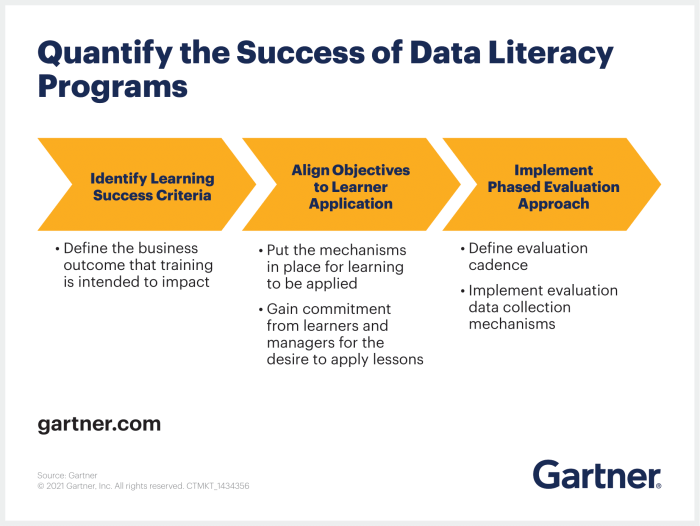
Data literacy is not just about understanding data; it’s about using that knowledge to make informed decisions, solve problems, and create value. It’s about seeing the world through a data-driven lens and using that perspective to make better choices.
Real-World Applications of Data Literacy, What is data literacy
Data literacy can be applied across various fields and industries, enabling individuals and organizations to make better decisions, improve efficiency, and drive innovation. Here are some examples:
- Analyzing Social Media Trends:Data literacy can be used to understand social media trends, sentiment analysis, and audience demographics. Businesses can leverage this information to tailor their marketing campaigns, engage with their target audience more effectively, and monitor brand reputation. For instance, a clothing brand can use data analytics to understand the popular fashion trends on platforms like Instagram and TikTok, allowing them to design and promote products that resonate with their target market.
This data-driven approach can lead to increased brand awareness, sales, and customer engagement.
- Interpreting Financial Reports:Data literacy is essential for understanding financial reports, such as balance sheets, income statements, and cash flow statements. Individuals can use this knowledge to make informed financial decisions, such as investing, budgeting, and managing debt. For example, an investor can use data literacy to analyze a company’s financial performance and make informed decisions about whether to invest in their stock.
By understanding key financial metrics, investors can assess a company’s profitability, liquidity, and solvency, making informed investment choices.
- Evaluating Scientific Research:Data literacy is crucial for critically evaluating scientific research, understanding data visualization, and identifying potential biases in research findings. This skill is vital for researchers, policymakers, and individuals who need to make informed decisions based on scientific evidence. For instance, a healthcare professional can use data literacy to evaluate the effectiveness of a new treatment based on clinical trial data.
By understanding statistical methods, research design, and data analysis techniques, they can assess the reliability and validity of research findings and make informed decisions about patient care.
Examples of Successful Data Literacy Applications
Numerous organizations and individuals have successfully leveraged data literacy to achieve their goals. Here are some notable examples:
- Netflix:Netflix is a prime example of a company that uses data literacy to drive success. They analyze user viewing habits and preferences to recommend movies and shows, personalize content suggestions, and optimize their streaming services. This data-driven approach has allowed Netflix to become a global leader in streaming entertainment, capturing a vast user base and achieving impressive growth.
Netflix’s data literacy empowers them to understand their audience, personalize experiences, and deliver content that resonates with viewers, leading to increased engagement and customer satisfaction.
- The World Health Organization (WHO):The WHO uses data literacy to track and monitor global health trends, identify outbreaks, and develop effective public health interventions. They use data to understand disease patterns, predict future health challenges, and allocate resources effectively. By leveraging data literacy, the WHO can make data-driven decisions to improve global health outcomes and protect populations from health threats.
- The United Nations:The United Nations uses data literacy to track progress towards achieving the Sustainable Development Goals (SDGs). They collect and analyze data on various aspects of global development, such as poverty, hunger, education, and environmental sustainability. This data helps them monitor progress, identify areas for improvement, and allocate resources effectively to achieve the SDGs.
By leveraging data literacy, the UN can make informed decisions to promote sustainable development and address global challenges.
Ethical Considerations and Challenges
While data literacy offers numerous benefits, it’s crucial to consider the ethical implications and potential challenges associated with using data. These include:
- Data Privacy and Security:It’s essential to ensure that data is collected, stored, and used ethically and responsibly, respecting individuals’ privacy and protecting sensitive information. Organizations must implement robust data security measures to prevent data breaches and unauthorized access. This includes adhering to data protection regulations like GDPR and CCPA, which Artikel guidelines for data collection, storage, and usage.
- Bias and Discrimination:Data can reflect existing biases and inequalities in society. It’s crucial to be aware of these biases and mitigate their impact when using data for decision-making. This involves using diverse datasets, employing statistical methods to identify and address bias, and ensuring that data-driven decisions are fair and equitable.
- Data Misinterpretation and Manipulation:Data can be misinterpreted or manipulated to support a particular agenda. It’s essential to be critical of data sources, understand the context in which data is collected and analyzed, and consider potential biases or limitations. This involves critically evaluating data sources, considering potential biases, and verifying information from multiple sources.


